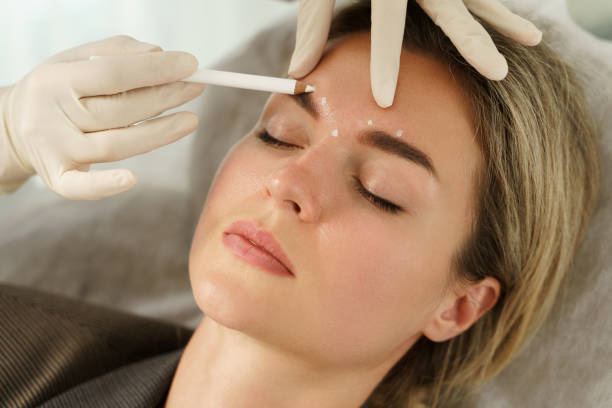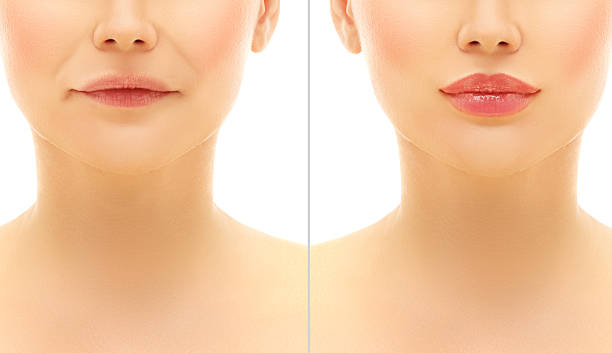The choice of the least painful filler can vary from person to person, as pain tolerance and sensitivity can differ. However, some fillers are generally considered to be less painful than others due to their composition and properties. Hyaluronic acid fillers, such as Restylane and Juvederm, are often regarded as less painful because they are formulated with lidocaine, a local anesthetic, which helps numb the area and reduce discomfort during the injection.
It’s important to note that pain perception is subjective, and individual experiences may vary. If you are considering filler treatments, it’s best to consult with a qualified healthcare provider or dermatologist who can assess your specific needs and discuss the options that would be most suitable for you, taking into consideration both the potential for pain and the desired results. Additionally, they can use various techniques to minimize discomfort during the procedure.

Where do fillers hurt the most?
The level of discomfort or pain experienced during filler injections can vary from person to person, and it’s influenced by several factors, including individual pain tolerance, the specific area being treated, and the technique used by the healthcare provider. Here are some general guidelines on where fillers may be more likely to cause discomfort:
- Lips: Lip fillers can be more sensitive and may cause more discomfort than other areas. The lips have a higher concentration of nerve endings, which can make the injection more painful for some individuals.
- Nasolabial Folds (Smile Lines) and Marionette Lines: These areas can also be sensitive for some people, as they are close to the mouth and may have thinner skin.
- Under Eyes (Tear Troughs): The under-eye area can be delicate and sensitive, making filler injections in this area potentially more uncomfortable.
- Forehead and Temple Areas: These areas may have less tissue and muscle, making filler injections more noticeable and potentially more uncomfortable.
- Nose (Non-Surgical Rhinoplasty): Filler injections in the nose, often used for non-surgical rhinoplasty, can cause discomfort due to the sensitivity of the nasal area.
It’s important to note that discomfort during filler injections is typically temporary and can vary widely among individuals. Many healthcare providers use topical numbing creams or apply ice to the treatment area before injecting fillers to help minimize pain and discomfort. Additionally, some dermal fillers contain lidocaine, a local anesthetic, which can help numb the area and reduce pain during the procedure.
If you are considering filler treatments, it’s advisable to discuss your concerns about pain and discomfort with a qualified healthcare provider or dermatologist. They can provide you with personalized recommendations and techniques to make the experience as comfortable as possible.
When do fillers stop hurting?
The duration of discomfort or pain after getting dermal filler injections can vary from person to person. In most cases, any pain or discomfort experienced is temporary and typically resolves within a few days to a week after the procedure. Here’s a general timeline of when you can expect fillers to stop hurting:
- Immediate Post-Injection Period (Minutes to Hours): You may experience some discomfort, tenderness, or swelling immediately after the filler injection. This is normal and is often related to the injection process itself. It should start to subside within hours.
- First Few Days (1-3 Days): In the days following the injection, you may continue to feel some tenderness, swelling, and minor discomfort. This is a common response as your body adjusts to the filler material and as any initial swelling starts to diminish.
- First Week (1 Week): By the end of the first week, the majority of swelling and discomfort should have resolved. Most people find that their treated areas feel more normal and less tender at this point.
- Complete Resolution (Up to 2 Weeks): Any residual discomfort or tenderness should completely resolve within two weeks after the filler injection. At this point, the treated areas should feel natural and comfortable.
It’s important to note that individual experiences can vary, and some people may have a faster or slower recovery. Factors such as the type of filler used, the injection technique, and the specific area treated can also influence the duration of discomfort.
To help minimize post-injection discomfort, follow your healthcare provider’s post-treatment instructions, which may include using ice packs, avoiding strenuous physical activity, and refraining from touching or massaging the treated areas immediately after the procedure.
If you have concerns about persistent pain, swelling, or any unusual side effects after getting fillers, it’s essential to contact your healthcare provider for guidance and evaluation.
